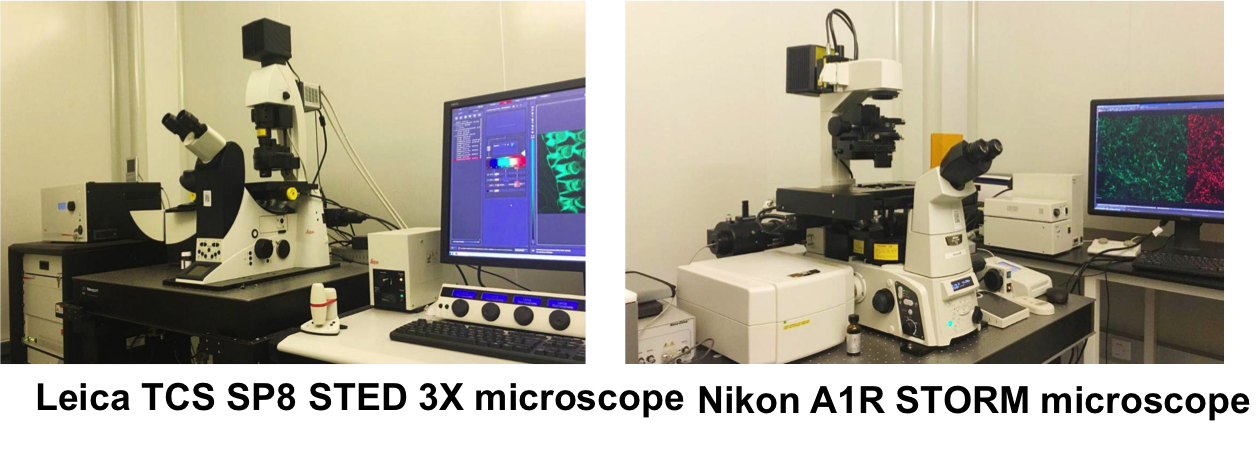Super-resolution fluorescence microscopy is a powerful tool for studying in nanometer resolution proteins (e.g. G protein coupled receptors) and molecular interactions. Our facility provides critical microscopy and imaging resources to ShanghaiTech University and beyond. Routinely, we help users, not only with image acquisition, but also with experimental design and image processing (i.e. image treatment and quantification). Our goal is to build a versatile, world-class imaging facility with active exploration and high-efficacy for supporting collaborative research.
The facility has three super-resolution microscopes: a Nikon STORM, a Leica STED and a self-built STORM microscope, all equipped with light sheet, conventional confocal and hyvolution modules.

The Leica TCS SP8 STED 3X microscope is equipped with a white light laser (470-670 nm, 1nm interval, pulse laser 80 MHz~10 MHz), Argon gas laser, 405 nm laser and 3 lines of depletion laser (592, 660, 775 nm). Auto-alignment of excitation and depletion lasers provides stability and reliability during STED imaging. The microscope boasts not only conventional PMT detectors but also excellent HyD detectors, with higher sensitivity. HyD, together with the time gating system, significantly improves signal-to-noise ratios. The Huygens SVI software further improves image quality using the deconvolution calculation. The full-spectrum pulse laser and spectral detection system allow maximum flexibility during imaging. This microscope also has a light sheet module.
The Nikon A1R STORM microscope is the most common commercial STORM microscope. It is equipped with Andor EM CCD, four laser beams (405,488,561,647 nm), Total Internal Reflection (TIRF) system and focus lock system (in Z direction) as well as a confocal module.
The Self-Built STORM microscope is a wide-field microscope equipped with Andor EM CCD and 5 lines of laser (405,458,488,560,642) with high laser power (500 mW for 561 nm and 642 nm laser), self-built TIRF, self-built focus lock (in both XY and Z directions) and dual view system. Compared to the commercial STORM microscope, this STORM module has two distinct advantages; first, high laser power significantly improves image quality; and second, it is flexible, adaptable and can be upgraded according to scientific requirement. Furthermore, the dual-view system makes simultaneous imaging of two-color fluorescence possible, very powerful during FRET imaging.

Self-built STORM microscope

